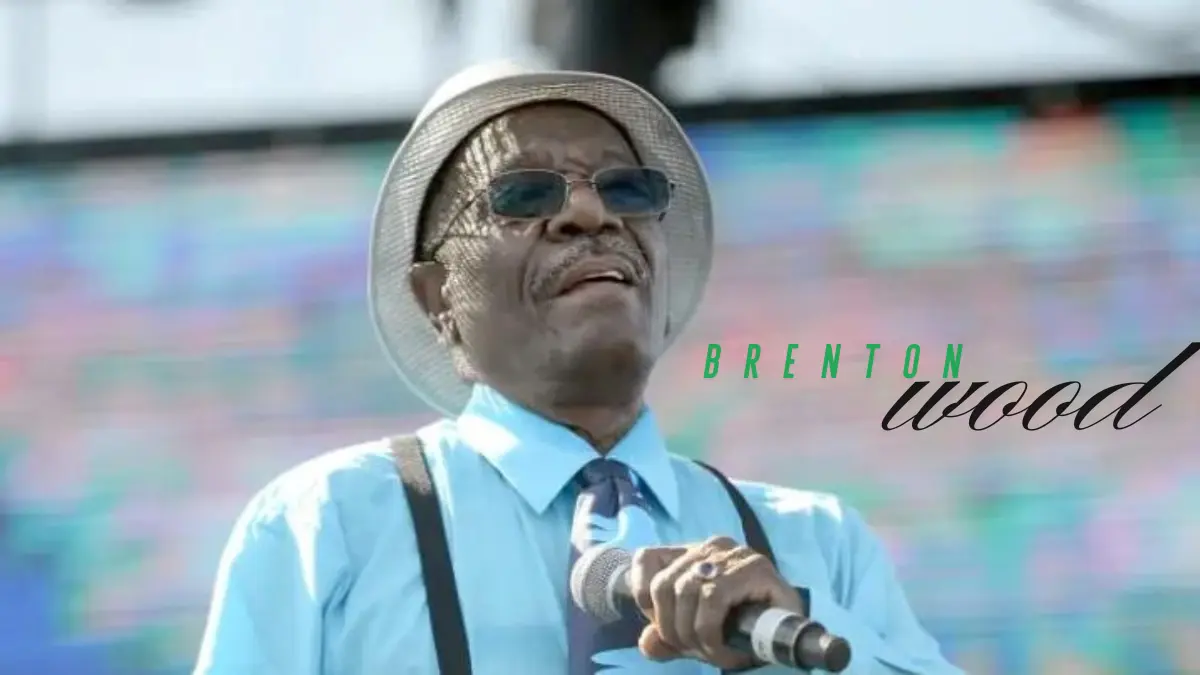Brenton Wood, born Alfred Jesse Smith on July 26, 1941, in Shreveport, Louisiana, is a name that resonates deeply within the annals of American music history. His work, marked by its soulful melodies and innovative integration of R&B with pop sensibilities, has influenced generations of artists and listeners alike. The journey of Brenton Wood from his early life to his rise as a music icon is a tale worth exploring, as it encapsulates the evolution of an artist who crafted timeless music while breaking barriers.
Early Life and Musical Beginnings

Brenton Wood grew up in a musically rich environment. Though born in Louisiana, his family relocated to San Pedro, California, when he was a child, eventually settling in Compton. It was here, amidst the dynamic cultural and social landscape of Southern California, that Wood’s passion for music began to take shape. He attended Compton High School, where his exposure to diverse musical styles, from jazz and gospel to burgeoning rock ‘n’ roll, laid the foundation for his future career.
Wood’s affinity for music became evident during his teenage years, as he began experimenting with songwriting and performing. Inspired by the soulful rhythms of artists like Sam Cooke and Ray Charles, he honed his vocal skills and developed a distinctive style that seamlessly blended emotional depth with catchy melodies. This period of exploration marked the genesis of Brenton Wood’s signature sound.
Rise to Stardom
In the early 1960s, Brenton Wood adopted his stage name, drawing inspiration from Brenton Wood, a wealthy district in Los Angeles that symbolized affluence and aspiration. This change signified Wood’s determination to craft a legacy as a musical trailblazer. He began performing at local venues, gradually gaining recognition for his engaging stage presence and unique voice.
Wood’s breakthrough came in 1967 with the release of his iconic single, “The Oogum Boogum Song.” The track, characterized by its playful lyrics and infectious rhythm, quickly climbed the charts and established Wood as a rising star. His ability to blend R&B with pop elements resonated with a broad audience, transcending racial and cultural boundaries at a time when America was grappling with social upheaval.
Following the success of “The Oogum Boogum Song,” Wood released another hit, “Gimme Little Sign.” This song further cemented his reputation as a hitmaker, earning him critical acclaim and commercial success. Its heartfelt lyrics and memorable melody showcased Wood’s versatility as an artist, while its enduring popularity attested to his talent for creating music that stood the test of time.
Musical Style and Artistic Impact
Brenton Wood’s music is defined by its soulful essence, infectious grooves, and relatable themes. His ability to infuse emotional sincerity into his songs while maintaining an upbeat and accessible sound made his work stand out in an era dominated by rock and Motown acts. Wood’s distinctive falsetto, combined with his knack for crafting memorable hooks, became a hallmark of his style.
A hallmark of Wood’s artistry was his ability to bridge genres. His songs often incorporated elements of doo-wop, soul, and pop, creating a unique blend that appealed to a diverse audience. This genre-blending approach not only broadened his appeal but also positioned him as a pioneer who pushed the boundaries of traditional R&B.
Beyond his vocal prowess, Wood’s songwriting reflected a keen understanding of human emotions. Whether exploring themes of love, heartbreak, or resilience, his lyrics resonated with listeners on a deeply personal level. This ability to connect with audiences through his music contributed significantly to his lasting influence.
Challenges and Resilience
Like many artists of his time, Brenton Wood faced challenges in navigating the music industry. Despite his initial success, maintaining momentum proved difficult as musical trends evolved during the late 1960s and 1970s. The rise of psychedelic rock and disco presented new competition, and Wood’s brand of soulful R&B-pop struggled to retain the same level of commercial success.
Nevertheless, Wood’s resilience and commitment to his craft never wavered. He continued to write and perform, releasing new material that showcased his enduring passion for music. His perseverance in the face of adversity underscored his dedication to his art and his belief in the timelessness of his sound.
Legacy and Influence
Brenton Wood’s impact on music extends far beyond his chart-topping hits. His work has inspired countless artists, from contemporary R&B singers to pop musicians who draw upon his genre-blending approach. The enduring appeal of songs like “The Oogum Boogum Song” and “Gimme Little Sign” underscores his ability to create music that transcends generations.
Wood’s influence can also be seen in the resurgence of interest in vintage soul and R&B. His music has been sampled and covered by numerous artists, introducing his work to new audiences and reaffirming his status as a seminal figure in American music history. In this way, Brenton Wood’s legacy continues to evolve, bridging the past and present through his timeless artistry.
Reflections on Brenton Wood’s Artistry
As a pioneer of soulful R&B and pop, Brenton Wood’s contributions to music are undeniable. His ability to create songs that are both deeply personal and universally appealing reflects a rare talent. Beyond his musical achievements, Wood’s story serves as a testament to the power of perseverance and artistic integrity.
Brenton Wood’s journey from a young boy in Louisiana to a celebrated musician is a testament to the transformative power of music. His work not only entertained but also provided a soundtrack for listeners navigating the complexities of life. As his music continues to inspire new generations, Brenton Wood remains a shining example of an artist who stayed true to his vision while leaving an indelible mark on the world of music.




